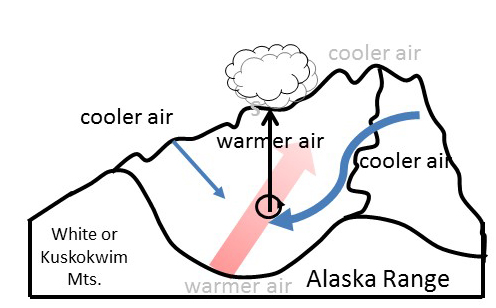Classical Mesoscale Circulations
So far we considered waves where different forces or combinations thereof were the restoring mechanisms to an initial perturbations. In the next units, we address classical mesoscale circulations like mountain-valley circulations and slope winds (this unit), sea breezes, land breezes and. coastal fronts. The term mesoscale circulation refers to the sudden reversal of winds. Classical mesoscale circulations are important for local and regional weather (and climate) conditions, air quality as well as for the selection of locations for sport events, wind and solar energy as well as hazard assessment.
Learning Goal
After completion of this unit students will be able to
- Define and explain classical mesoscale circulations
- Identify mountain-valley circulations and slope winds in satellite and other data including weather maps
- Explain the processes of mountain-valley circulations and slope winds in physical terms and under which large scale conditions they may occur
- Explain the role of these local wind systems for air quality and other hazard
- Explain the consequences of the simultaneous occurrence of mountain-valley circulations and slope winds, vertical vorticity formation and their hazards for aviation (graduate students)
Students’ tasks
- Watch this video giving a brief theoretical background on classical mesoscale circulations in general
- Watch this video of a worked problem
- Read chapters chapters 7.3 to 7.3.1.2 in Lectures in Meteorology
- Read chapters 5.3.2a, 6.2.2, 6.3.1, 6.6 in Mesoscale Dynamics (graduate students)
- Download this unit4 application task sheet, discuss and scan your results, and submit them by Thursday 2359 AST to cmoelders@alaska.edu
Supplemental material
MetEd Mountain-Valley breeze video
© Nicole Mölders | All rights reserved
